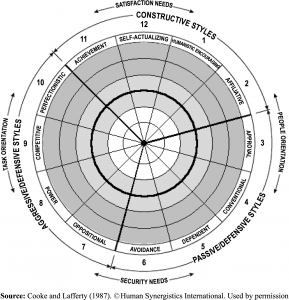At this moment there is a lot of discussion going on about the New World of Work. In the New World of Work the new developments of the Internet 2.0 (Social Networks, Blogging, Twittering, etc) are used to Speed up the Work of the Knowlegde Worker. The infrastructure to make this possible is called Enterprise 2.0.
Enterprise 2.0 is : A System of Web (2.0)-Based Technologies that provide rapid and agile Collaboration, Information Sharing, emergence and integration capabilities in the Extended Enterprise. An Extended Enterprise is a Supply or Value Chain.
The definition of Enterprise 2.0 is constantly changing because Enterprise 2.0 is still a Concept. Many people are now struggeling to move from the concept/idea-stage to the realization-phase.
The main issue behind de term “Web 2.0” is the move from a Sender/Receiver-model, the One-Sided Website, to a more Collaborative use of the Internet (Discussions, Social Networks). According to the Inventors of the term Web 2.0 the “new web”, is a Collaborative Web.
For some reason they have forgotten that the World Wide Web (WWW) software of Tim Berners Lee was part of a Collaborative Platform to support the scientists that Participated in a Network called DARPANET. This network was created by DARPA, the Technological Think-Tank of the American Army in 1957!.
What is the definition of the term “Collaboration”?
The word “collaborate” comes from the Latin “Collaboratus” meaning “Work (Labore) together (Col)”. The term “to-gather” comes from the term “gadurojan” which means “in good fellowship” or “United“. When you Collaborate you are not working Alone but with Others United in Good Fellowship.
The Potential to Collaborate is an Aspect of the Personality.
The Personality Types of the Human Being can be described with two variables Agency and Communion. Comm-Union is the capability to Col-Laborate, to accomplish a Union. The variable Agency describes your relationship between the Self and the Other.
When you are High in Communion and Low in Agency you are suffering from a Dependent Personality Disorder. This disorder is characterized by a pervasive psychological dependence on other people. You always want to Collaborate and are very Emotional.
When you are High in Communion and High in Agency you are suffering from a Histrionic Personality Disorder. People with a Histrionic Personality Disorder have good social skills, but they tend to use these skills to manipulate other people to become the Center of Attention. They are very Imaginative.
According to Interpersonal Theory a “normal” person is able to Combine Two or More Interpersonal Faculties.
There are two Disorders left called Paranoid (High Agency, Low Communion) and Schizophrenic (Low Agency, Low Communion). Paranoid people have a big problem with their Expectation. They want to control the Future and Every Person in their Context. Schizophrenic people are completely influenced by their mostly Visual Senses. They See what they Want to See.
If you combine the Four Interpersonal Faculties (Emotions, Imagination, Expectations and Senses) Twelve Interpersonal, Collaborative, Patterns emerge. A good example is the Master(Paranoid)/Slave(Dependent)-Relationship (Expectation/Emotions). Some People Love to be Dominated by the Other.
Interpersonal Faculties can be combined into Collaborative Work Patterns.
In my blog about Vocation I showed that work is an Expression of the Personality. If you believe this is True and you believe Interpersonal Theory is True you have to admit there are Twelve Types of Work.
When you are highly Imaginative and Sensitive (You Believe Your Own Eyes, You are Realistic, Factual) you are an Entrepreneur, You want to bring An Idea into Reality. To Find the Facts you need an Information System to Investigate what is Happening. The Internet with all its Sources of Information is a beautiful tool to use.
To bring an Idea into Practice you have to Realize the Idea. In this case you need a Designer (Transform Ideas into Models) and a Maker (Bring Models into Reality). A Maker is not a Collaborative person (Low Communion). Makers want to work Alone.
When you create a Team of Makers to Realize your Idea the Team will fail. To avoid Competition the Designer has to define a Model (An Architecture and a Project Plan) in which all the Lonesome Workers are able to do their Specialized Job.
I hope you believe we are able to define a complete (meta)-Architecture and a (meta)-Plan to move around in the (meta)-Work-Space.
What is the Relationship between the Work Patterns and Enterprise 2.0?
An Enterprise is a combination of many people with many Collaborative Work-patterns. We could Specialize an Enterprise to perform one kind of Pattern. If we Specialize an Enterprise we have to combine many Enterprises in an Extended Enterprise to do Everything we Want to Do.
We need a Designer Company, A Sales Company, Visionairs, Entrepeneurs and other Roles to cover the Complete Spectrum of Work. If We want to Produce we always need the Makers. The Makers need a well defined Structure (A Hierarchy), a Plan and an Architecture, to operate in.
At this moment Enterprise 2.0 is nothing but a Concept. Somebody of High Agency and High Communion (A Creator) has gotten the Idea that the new 2.0 Internet is able to support an Enterprise.
He hopes that the new tools will break down the Hierarchical Structure of the Organization of the Makers. Creators don’t like Hierarchies. They love Networks. If Creators are One-Sided, Histrionic, they want to Stay in the Center of Attention of the Network.
What Creators don’t realize is that Makers, the Majority of the Human Beings, don’t want to use Collaborative Tools. They want to work Alone in their own Specialized Compartment of the Beehive.
Enterprise 2.0 is a Concept to support Innovation. Someday the Innovation has to be Stabilized. If we want to do that we still need Enterprise 1.0, The Factory until we find another Solution (The Robots?).
Don’t forget the Worker Bees. They Bring in the Honey.


